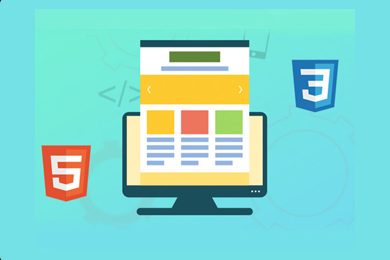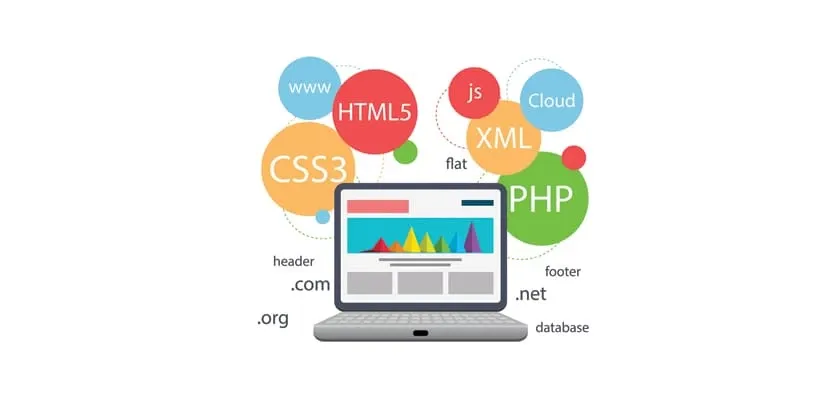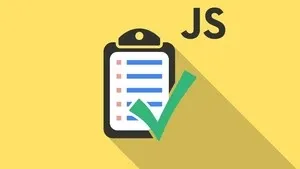This plan includes
- Limited free courses access
- Play & Pause Course Videos
- Video Recorded Lectures
- Learn on Mobile/PC/Tablet
- Quizzes and Real Projects
- Lifetime Course Certificate
- Email & Chat Support
What you'll learn?
- Styling Module
- Color Module
- Text Module
- Fonts Module
- Selectors
- Pseudo Classes
- Generated Contents
- Specificity
- Values & Units
- List Styles
- Box Model
- Background Module
- Gradients
- Display Module
- Positioning Module
- Filters Module
- Clipping & Masking
- Blending Modes
- Shapes Module
- Table Layout
- Transformation
- Transition & Animations (Keyframes)
- Media Queries
- Newly Introduced CSS 3 concepts
- You will be getting lots of resources during the course
- You will be developing 50+ simple projects
- You will get a free ebook for CSS 3 references and tools
Course Overview
Are you looking to enhance your website by trying out new Typeface, Colors, Effects, animations and lot more?
Have an idea about colors, effects, animations but don’t know how to implement it.
Don’t worry here is one stop solution to all your queries.
The very first thing you need to know is, a website without CSS3 is just like a skeleton without body. This course will first give basic understanding of designing your website with the greater effects to grab the end users concentration.
Curious to know in detail about your course? Please check out the detailed description of the topics that are covered in course.
First things First
I will take you through a quick tour to let you know what are the topics covered. Apart from this you can find multiple projects which you will be able to do after your end of course. I have even provided a file for answers to the exercises that are asked to be solved in between the course.
The main beauty of this section is, you can find many references which makes your way of learning easier. I believe “Learning is always fun “, thus I have included many Brain Hunt’s as well, trust me! It’s quite interesting and fun to resolve them.
Styling Module
In this part, you're going to explore options for styling guide, you’ll create a new page component and style that page component using a CSS styles. You will learn to use when, where and how to use these styles.
Color Module
This part contains color format, opacity and transparency.
Text Module
In this section you will get to know more about writing mode , directions , orientation, shadows, letter spacing , word spacing and many more.
Fonts Module
This includes how to import google forms. Along with this you will learn about font family, size, weight , custom font loading.
Selectors
Selectors makes work much easier! Types of selectors and how to use them is explained in this section with the concepts universal, type, class, ID, Attribute Selectors. Along with child, next sibling combinatory.
Pseudo Class & Element Selector
This section contains location pseudo class, user action, input, Lang pseudo class.
Generated Contents
This section involves topics like string, image, counter, attribute, Unicode character entities.
Specificity
In this section you will get to know more about naming convention and case sensitivity, selector’s specificity, BEM Design pattern, specificity hack.
Values & Units
This section covers distance units, quantities, functional notations.
List Styles
In detail explains you about how to style a list using style position, style image, style type.
Box Model
Explains about width & height, min & max width, border, padding, rounded corners, overflows, Box-Shadow and many more.
Background Module
Discusses about Background color, image, repeat, position, attachment, clip, size, origin.
Gradients
How to apply gradients? And the types are gradients available.
Display Module
How to display block, inline block, none and visibility.
Positioning
How to position an element by using floats, clear, all positioning, and box offset functionality.
Filter Modules
How to apply filters using filter property and filter functions.
Clipping and Masking Module
In detail about clipping and masking functionality.
Blend Mode Module
How to blend things using mix blend mode, background blend mode and much more about lighten group, contrast group, darken group, inversion group & component group.
Shapes Module
Includes all shape methods.
Tables Module
Explains in detail about how to border collapse/separate, border spacing, caption side, empty cells, table layout.
Transformation
Includes transform origin, 2D-transformation, 3D-transformation.
Transition & Animations
Includes Transition property, transition duration, transition timing function, transition delay animation name, animation duration, animation timing function and many...
Media queries
Viewport / page dimension features.
Additional topics
Box reflect, text stroke, backdrop filter, variable fonts, background-clip: text, cursor, pointer events, user select.
And you have awesome tools for CSS 3, resources and a project to start after the finish of the course.
Happy Learning!
All the Best
Pre-requisites
- This is a beginner to advance course — You do not have to worry about anything , this is from scratch
- Any computer and OS will work — Windows, macOS or Linux
- There is no need for any paid software — The text editor you already have works just fine
- During this course we are going to use free tools, so you do not have to buy anything. :)
Target Audience
- Complete beginners who want to learn how to build a professional, beautiful and responsive website
- Designers who want to expand their skill set into CSS 3
- Web developers who want to update their CSS skills to the most modern and advance level
- Developers who want to finally understand how CSS works under the hood
- In general: anyone who wants to learn CSS 3
- People who are interested in publishing their own websites and mobile apps
- This course is best suited for beginner-level students interested in the latest developments in CSS 3
- Anyone who wants to learn CSS 3 for the first time or wants to enhance their CSS skills
- Anyone who is excited to learn about the latest CSS 3 features
- Anyone who knows CSS but wants to dive deeper and learn more about CSS 3
Curriculum 181 Lectures 17:26:41
Section 1 : First thing first :)
- Lecture 2 :
- Project Showcase 1
- Lecture 3 :
- Project Showcase 2
- Lecture 4 :
- Project Showcase 3
- Lecture 5 :
- Project Showcase 4
- Lecture 6 :
- Project Showcase 5
- Lecture 7 :
- Project Showcase 6
- Lecture 8 :
- First Thing First
Section 2 : Styling Module
- Lecture 1 :
- Introduction to CSS 3
- Lecture 2 :
- Environment Setup
- Lecture 3 :
- Inline Styling
- Lecture 4 :
- Internal or Embedded Styling
- Lecture 5 :
- External Styling
- Lecture 6 :
- Recap
Section 3 : Color Module
- Lecture 1 :
- Color Format
- Lecture 2 :
- Opacity and Transparency
- Lecture 3 :
- Recap
Section 4 : Text Module
- Lecture 1 :
- Text Module 1
- Lecture 2 :
- Text Module 2
- Lecture 3 :
- Text Module 3
- Lecture 4 :
- Text Module 4
- Lecture 5 :
- Text Module 5
- Lecture 6 :
- Text Module 6
- Lecture 7 :
- Text Module 7
- Lecture 8 :
- Text Module 8
- Lecture 9 :
- Recap
Section 5 : Fonts Module
- Lecture 1 :
- Fonts Module 1
- Lecture 2 :
- Fonts Module 2
- Lecture 3 :
- Fonts Module 3
- Lecture 4 :
- Recap
Section 6 : Selectors
- Lecture 1 :
- Selector Module 1
- Lecture 2 :
- Selector Module 2
- Lecture 3 :
- Selector Module 3
- Lecture 4 :
- Selector Module 4
- Lecture 5 :
- Recap
Section 7 : Pseudo Classes
- Lecture 1 :
- Pseudo class 1
- Lecture 2 :
- Pseudo class 2
- Lecture 3 :
- Pseudo class 3
- Lecture 4 :
- Pseudo class 4
- Lecture 5 :
- Pseudo class 5
- Lecture 6 :
- Pseudo class 6
- Lecture 7 :
- Pseudo class 7
- Lecture 8 :
- Pseudo class 8
- Lecture 9 :
- Pseudo class 9
- Lecture 10 :
- Pseudo class 10
- Lecture 11 :
- Pseudo class 11
- Lecture 12 :
- Pseudo class 12
- Lecture 13 :
- Pseudo class 13
- Lecture 14 :
- Pseudo class 14
- Lecture 15 :
- Recap
Section 8 : Generated Contents
- Lecture 1 :
- Generated Content 1
- Lecture 2 :
- Generated Content 2
- Lecture 3 :
- Generated Content 3
- Lecture 4 :
- Recap
Section 9 : Specificity
- Lecture 1 :
- Specificity 1
- Lecture 2 :
- Specificity 2
- Lecture 3 :
- Specificity 3
- Lecture 4 :
- Specificity 4
- Lecture 5 :
- Specificity 5
- Lecture 6 :
- Specificity 6
- Lecture 7 :
- Specificity 7
- Lecture 8 :
- Recap
Section 10 : Values and Units
- Lecture 1 :
- Values and Units 1
- Lecture 2 :
- Values and Units 2
- Lecture 3 :
- Values and Units 3
- Lecture 4 :
- Values and Units 4
- Lecture 5 :
- Values and Units 5
- Lecture 6 :
- Values and Units 6
- Lecture 7 :
- Values and Units 7
- Lecture 8 :
- Values and Units 8
- Lecture 9 :
- Recap
Section 11 : List Styles
- Lecture 1 :
- How to style a list
- Lecture 2 :
- Recap
Section 12 : Box Model
- Lecture 1 :
- Box Model 1
- Lecture 2 :
- Box Model 2
- Lecture 3 :
- Box Model 3
- Lecture 4 :
- Box Model 4
- Lecture 5 :
- Box Model 5
- Lecture 6 :
- Box Model 6
- Lecture 7 :
- Box Model 7
- Lecture 8 :
- Box Model 8
- Lecture 9 :
- Box Model 9
- Lecture 10 :
- Recap
Section 13 : Background Module
- Lecture 1 :
- Background Module 1
- Lecture 2 :
- Background Module 2
- Lecture 3 :
- Background Module 3
- Lecture 4 :
- Background Module 4
- Lecture 5 :
- Background Module 5
- Lecture 6 :
- Background Module 6
- Lecture 7 :
- Background Module 7
- Lecture 8 :
- Background Module 8
- Lecture 9 :
- Background Module 9
- Lecture 10 :
- Recap
Section 14 : Gradients
- Lecture 1 :
- Gradient Module 1
- Lecture 2 :
- Gradient Module 2
- Lecture 3 :
- Gradient Module 3
- Lecture 4 :
- Recap
Section 15 : Display Module
- Lecture 1 :
- Display Module 1
- Lecture 2 :
- Display Module 2
- Lecture 3 :
- Recap
Section 16 : Positioning Module
- Lecture 1 :
- Positioning Module 1
- Lecture 2 :
- Positioning Module 2
- Lecture 3 :
- Positioning Module 3
- Lecture 4 :
- Positioning Module 4
- Lecture 5 :
- Positioning Module 5
- Lecture 6 :
- Positioning Module 6
- Lecture 7 :
- Positioning Module 7
- Lecture 8 :
- Recap
Section 17 : Filters Module
- Lecture 1 :
- Filter Module 1
- Lecture 2 :
- Filter Module 2
- Lecture 3 :
- Filter Module 3
- Lecture 4 :
- Filter Module 4
- Lecture 5 :
- Recap
Section 18 : Clipping and Masking Module
- Lecture 1 :
- Clipping and Masking Module 1
- Lecture 2 :
- Clipping and Masking Module 2
- Lecture 3 :
- Clipping and Masking Module 3
- Lecture 4 :
- Clipping and Masking Module 4
- Lecture 5 :
- Recap
Section 19 : Blend Mode Module
- Lecture 1 :
- Blend Mode Module 1
- Lecture 2 :
- Blend Mode Module 2
- Lecture 3 :
- Blend Mode Module 3
- Lecture 4 :
- Recap
Section 20 : Shapes Module
- Lecture 1 :
- Shapes Module 1
- Lecture 2 :
- Shapes Module 2
- Lecture 3 :
- Shapes Module 3
- Lecture 4 :
- Recap
Section 21 : Table Module
- Lecture 1 :
- Table Module 1
- Lecture 2 :
- Table Module 2
- Lecture 3 :
- Recap
Section 22 : Transformation Module
- Lecture 1 :
- Transform-Module 1
- Lecture 2 :
- Transform-Module 2
- Lecture 3 :
- Transform-Module 3
- Lecture 4 :
- Transform-Module 4
- Lecture 5 :
- Transform-Module 5
- Lecture 6 :
- Transform-Module 6
- Lecture 7 :
- Transform-Module 7
- Lecture 8 :
- Transform-Module 8
- Lecture 9 :
- Transform-Module 9
- Lecture 10 :
- Transform-Module 10
- Lecture 11 :
- Transform-Module 11
- Lecture 12 :
- Transform-Module 12
- Lecture 13 :
- Transform-Module 13
- Lecture 14 :
- Transform-Module 14
- Lecture 15 :
- Transform-Module 15
- Lecture 16 :
- Transform-Module 16
- Lecture 17 :
- Transform-Module 17
- Lecture 18 :
- Recap
Section 23 : Transition and Animations Module
- Lecture 1 :
- Transition and Animations Module 1
- Lecture 2 :
- Transition and Animations Module 2
- Lecture 3 :
- Transition and Animations Module 3
- Lecture 4 :
- Transition and Animations Module 4
- Lecture 5 :
- Transition and Animations Module 5
- Lecture 6 :
- Transition and Animations Module 6
- Lecture 7 :
- Transition and Animations Module 7
- Lecture 8 :
- Transition and Animations Module 8
- Lecture 9 :
- Transition and Animations Module 9
- Lecture 10 :
- Transition and Animations Module 10
- Lecture 11 :
- Transition and Animations Module 11
- Lecture 12 :
- Transition and Animations Module 12
- Lecture 13 :
- Transition and Animations Module 13
- Lecture 14 :
- Transition and Animations Module 14
- Lecture 15 :
- Recap
Section 24 : Media Queries
- Lecture 1 :
- Media Queries Module 1
- Lecture 2 :
- Media Queries Module 2
- Lecture 3 :
- Media Queries Module 3
- Lecture 4 :
- Media Queries Module 4
- Lecture 5 :
- Media Queries Module 5
- Lecture 6 :
- Recap
Section 25 : Additional Topics
- Lecture 1 :
- Additional Topic 1
- Lecture 2 :
- Additional Topic 2
- Lecture 3 :
- Additional Topic 3
- Lecture 4 :
- Additional Topic 4
- Lecture 5 :
- Additional Topic 5
- Lecture 6 :
- Additional Topic 6
- Lecture 7 :
- Additional Topic 7
- Lecture 8 :
- Additional Topic 8
- Lecture 9 :
- Recap
Section 26 : What Next?
- Lecture 1 :
- Awesome Tools for CSS 3
- Lecture 2 :
- Awesome Resources of CSS 3
- Lecture 3 :
- You are almost done
- Lecture 4 :
- Bonus Lecture
Our learners work at
Frequently Asked Questions
How do i access the course after purchase?
It's simple. When you sign up, you'll immediately have unlimited viewing of thousands of expert courses, paths to guide your learning, tools to measure your skills and hands-on resources like exercise files. There’s no limit on what you can learn and you can cancel at any time.Are these video based online self-learning courses?
Yes. All of the courses comes with online video based lectures created by certified instructors. Instructors have crafted these courses with a blend of high quality interactive videos, lectures, quizzes & real world projects to give you an indepth knowledge about the topic.Can i play & pause the course as per my convenience?
Yes absolutely & thats one of the advantage of self-paced courses. You can anytime pause or resume the course & come back & forth from one lecture to another lecture, play the videos mulitple times & so on.How do i contact the instructor for any doubts or questions?
Most of these courses have general questions & answers already covered within the course lectures. However, if you need any further help from the instructor, you can use the inbuilt Chat with Instructor option to send a message to an instructor & they will reply you within 24 hours. You can ask as many questions as you want.Do i need a pc to access the course or can i do it on mobile & tablet as well?
Brilliant question? Isn't it? You can access the courses on any device like PC, Mobile, Tablet & even on a smart tv. For mobile & a tablet you can download the Learnfly android or an iOS app. If mobile app is not available in your country, you can access the course directly by visting our website, its fully mobile friendly.Do i get any certificate for the courses?
Yes. Once you complete any course on our platform along with provided assessments by the instructor, you will be eligble to get certificate of course completion.
For how long can i access my course on the platform?
You require an active subscription to access courses on our platform. If your subscription is active, you can access any course on our platform with no restrictions.Is there any free trial?
Currently, we do not offer any free trial.Can i cancel anytime?
Yes, you can cancel your subscription at any time. Your subscription will auto-renew until you cancel, but why would you want to?
Instructor

31026 Course Views
1 Courses



 Tech & IT
Tech & IT
 Business
Business
 Coding & Developer
Coding & Developer
 Finance & Accounting
Finance & Accounting
 Academics
Academics
 Office Applications
Office Applications
 Art & Design
Art & Design
 Marketing
Marketing
 Health & Wellness
Health & Wellness
 Sounds & Music
Sounds & Music
 Lifestyle
Lifestyle
 Photography
Photography

















